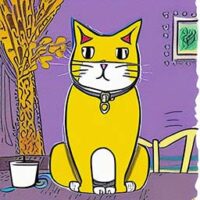
It’s no secret that Americans love their cats. In fact, there are more households with cats than dogs in the United States. And while we love all of our furry friends, there’s something special about a chubby cat. Perhaps it’s because they’re just so huggable. Or maybe it’s because they always seem to have a positive outlook on life (likely due to all of those extra naps they get). Regardless of the reason, if you have a fat cat, you know that they are one of a kind.
But as any good pet parent knows, caring for a fat cat is not as simple as just giving them lots of food and treats. In fact, obesity is one of the most common health problems in cats, and can lead to a host of other issues like pancreatitis, diabetes, and joint problems. So how can you make sure your chubby kitty stays healthy and happy? Read on to find out!
Feeding Your Fat Cat
The first step in caring for your fat cat is ensuring that they are fed a nutritious diet that meets their needs. Just like humans, obese cats need to consume fewer calories than their leaner counterparts. But that doesn’t mean they should be deprived of food altogether—in fact, doing so can actually be harmful to their health. A good rule of thumb is to feed your cat about 20-25% less than the recommended amount on the food label. For example, if the food label recommends feeding your cat 1/2 cup per day, you would only give them 1/3 cup instead.

In addition to portion control, you also need to be mindful of the type of food you are feeding your cat. Many commercial cat foods are high in carbohydrates, which can actually contribute to weight gain. Instead, look for foods that are higher in protein and lower in carbs. And when in doubt, always consult with your veterinarian to get their professional opinion on what type of food is best for your chubby kitty.
Exercise For Your Fat Cat
Just because your cat is overweight doesn’t mean they don’t need exercise! In fact, regular exercise is an important part of any weight loss plan—for both humans and animals. The key is finding an exercise routine that works for both you and your cat. If your cat isn’t particularly interested in playing with toys or doesn’t enjoy being outdoors, there are still plenty of options for indoor exercise. Try placing their food bowl on top of a taller piece of furniture so they have to jump to get to it. Or create an indoor obstacle course using boxes or cardboard tubes for them to navigate through. Just use your imagination and have fun!

Caring for a fat cat may require some extra effort, but it’s well worth it when you see those big eyes looking up at you lovingly (and hopefully not too expectantly). By following these simple tips, you can help ensure that your chubby kitty stays healthy and happy for years to come.
